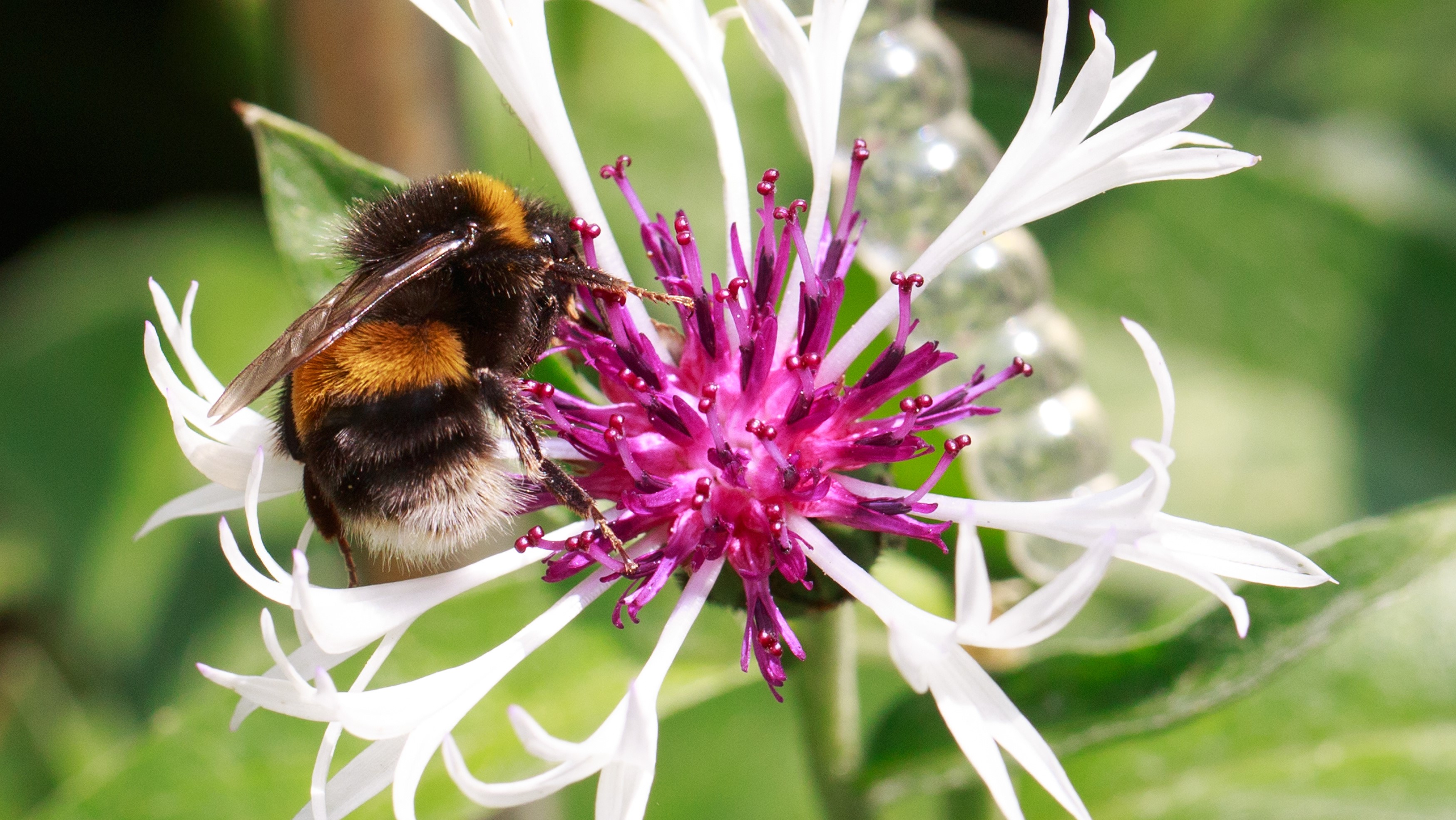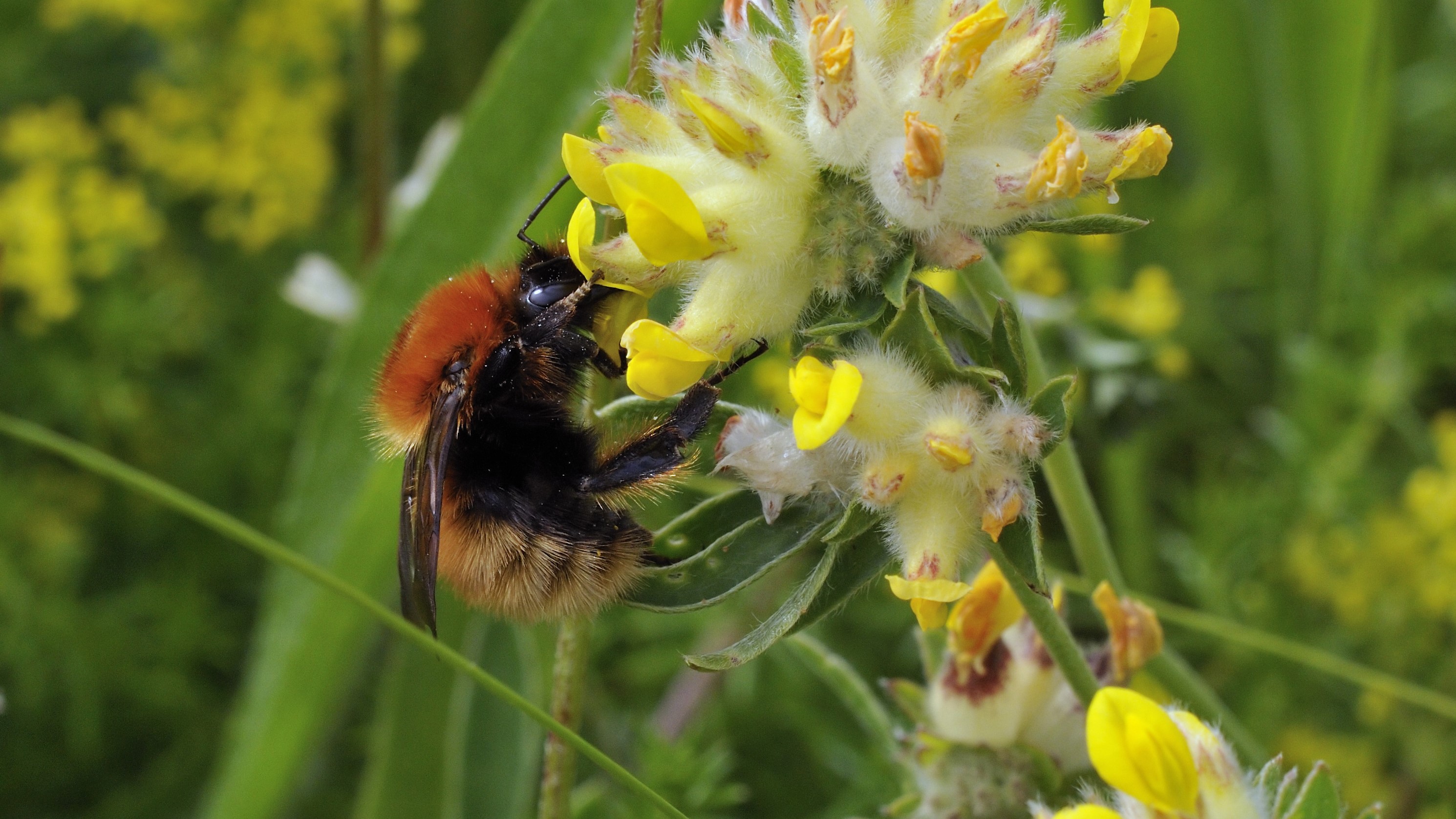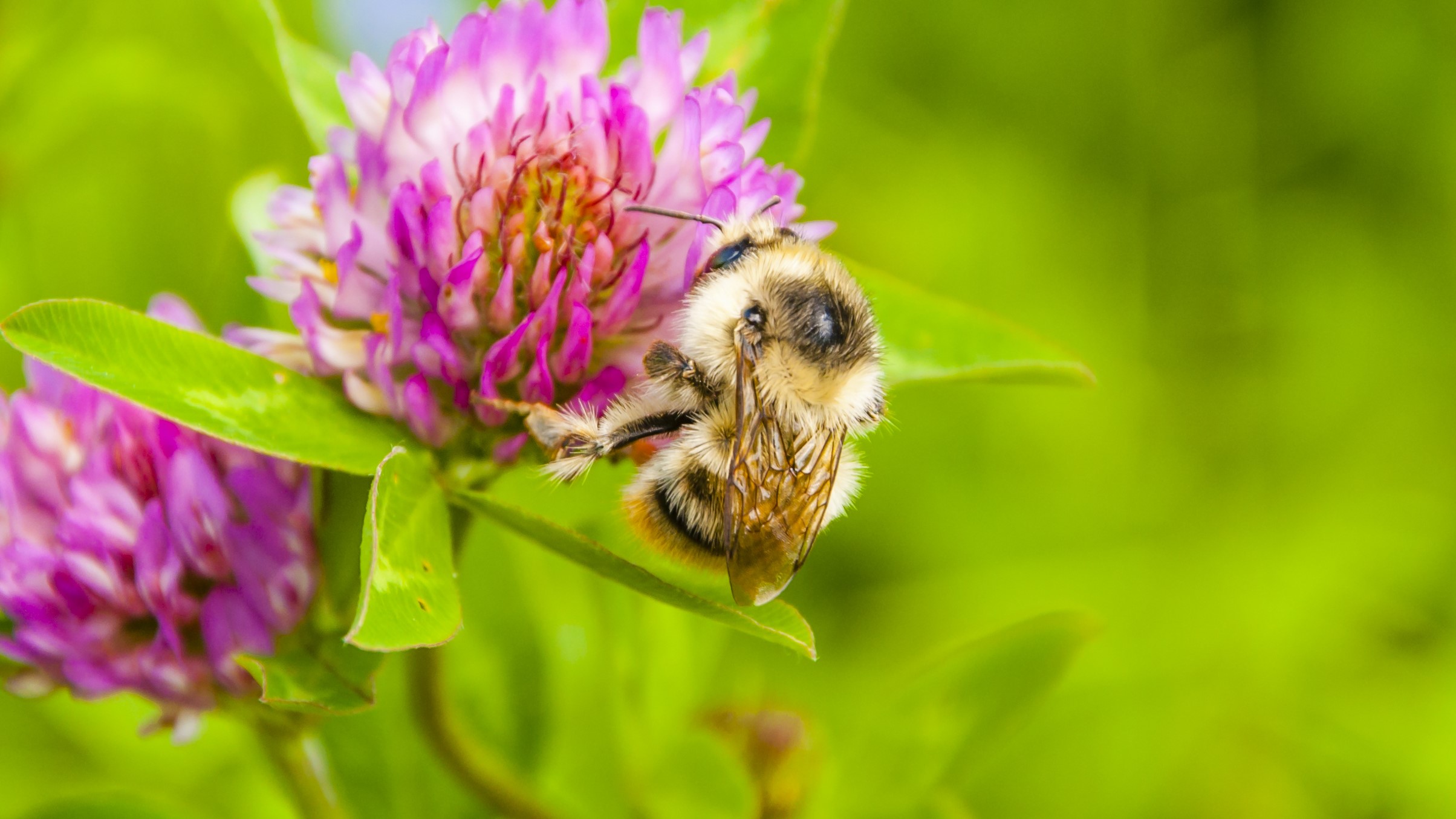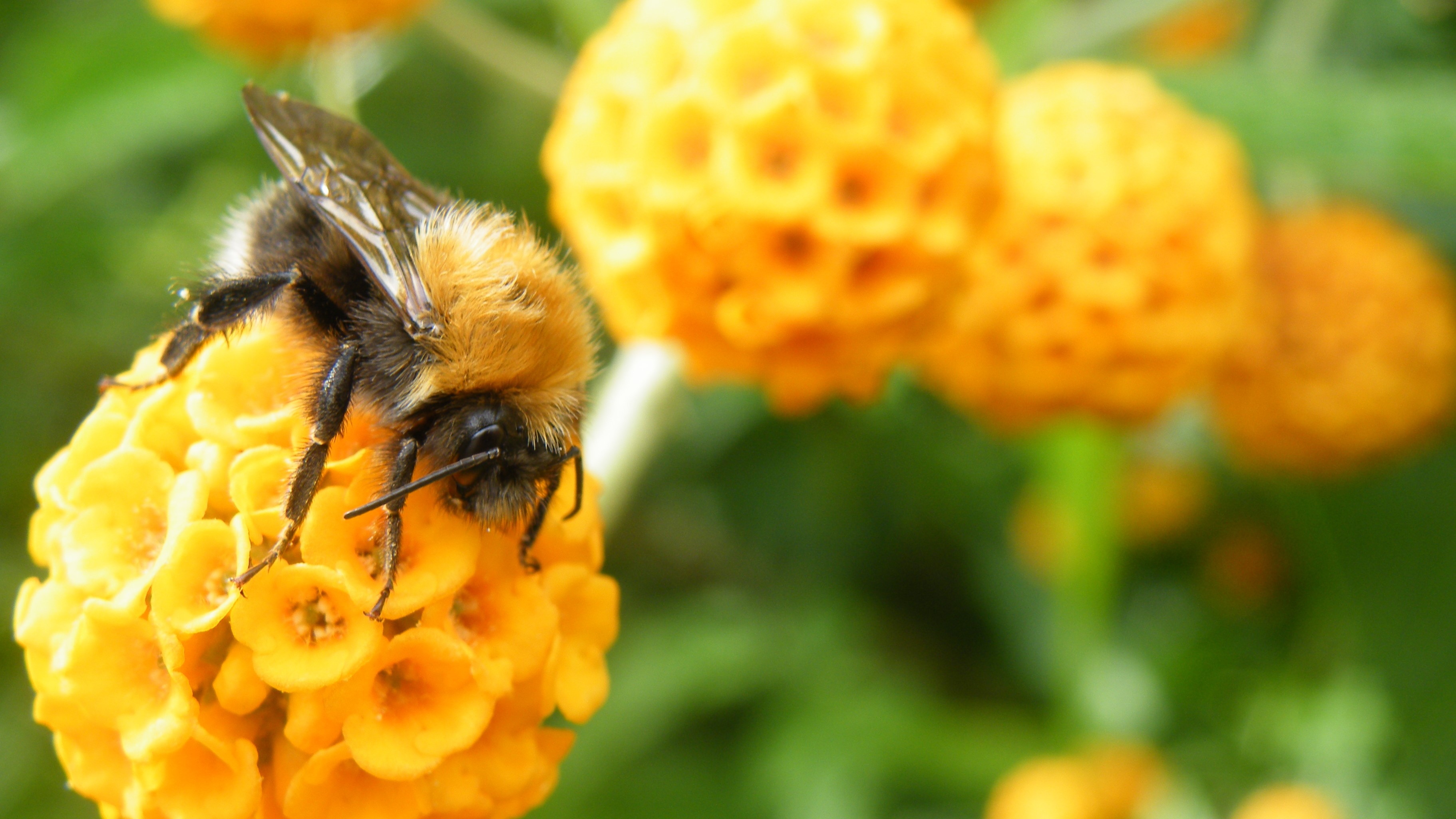Bumblebees are large, fluffy and irresistibly charming as they clumsily bumble from flower to flower in summer across the UK. There are 24 UK species, with only a few regularly seen.
These highly social bees live in colonies of a few hundred. Naturally, they would seek out holes in trees or under boulders for their nest, but you will quite often see them make home under walls and in bird boxes.
Brown-Banded Carder Bee
These are some of the rarest of all the carder bee species in the UK. These bumblebees boast impressive ginger tufts of hair opposite pronounced brown bands that cut across their abdomens.
Buff-Tailed Bumblebee
Buff-tailed bumblebees get their name from the Queen bee’s pale brown tail. The all-female workers don’t have these distinctive tails and instead have a white tail with a thin band of buff fur lapping the base of…
Common Carder Bee
The Common Carder Bee is one of the most widespread in Britain and can be seen in gardens from Cornwall to Scotland. These fluffy bumblebees are covered in gingery-brown hairs with black…
Early Bumblebee
These bees have black and yellow bands striped across their bodies with orange tails. Mails have yellow facial hair. This is the UK’s smallest bumblebee.
Garden Bumblebee
Garden bumblebees are common across the UK. They have distinctive, long faces that hold a long tongue that’s used to reach the nectar at the bottom of deep florets. Queens, males and the all-female workers…
Moss Carder Bee
As with all carder bees, these pollinators are covered in ginger hairs, which makes it easier to distinguish them from other bumblebee species.
Red-Tailed Bumblebee
Female red-tailed bumblebees are pitch black with, you guessed it, distinctive red tales. The males stand out from the all-female workers with golden bands across their thorax.
Shrill Carder Bee
Shrill carder bees are one of the rarest species in the UK. These bees have a pale grey-yellow colouring with black stripes across their abdomen, a black band of hair behind their wings and an orange tail.
Tree Bumblebee
These non-native bumblebees were discovered in the UK in 2001 and widely welcomed due to the fall in domestic bee numbers. Tree bumblebees are distinct from their native cousins by their ginger…
White-Tailed Bumblebee
When people think of bumblebees, this is often the species many envisage. White-tailed bumblebees are black with two bright yellow bands running across their bodies and bright white tails.










